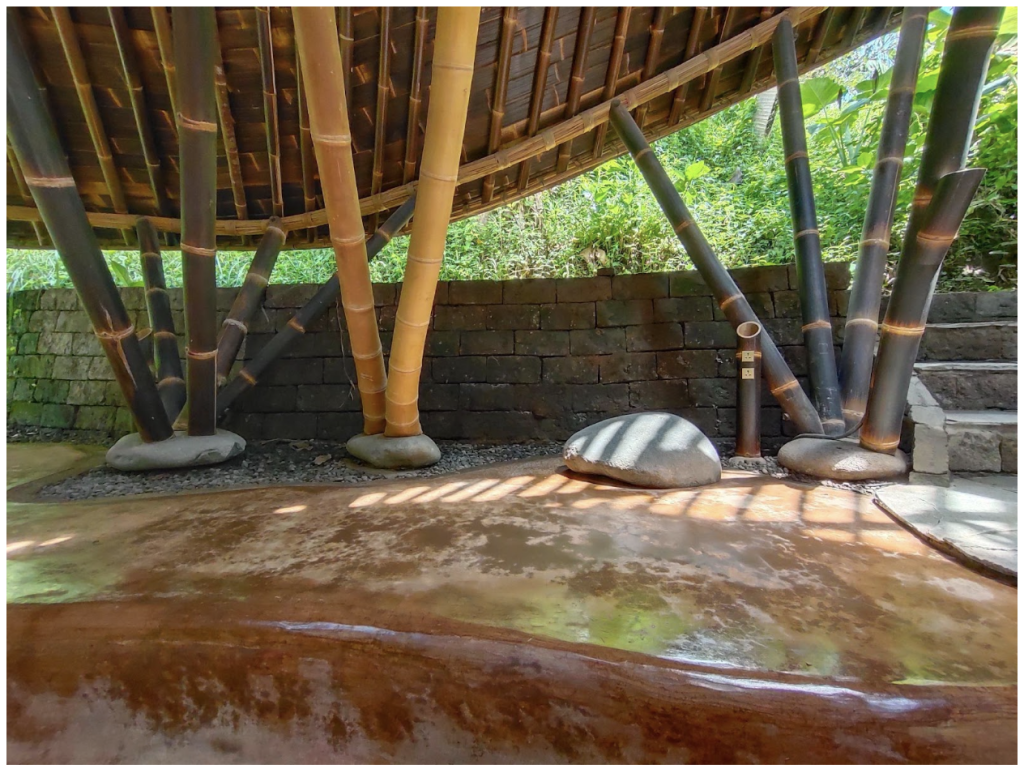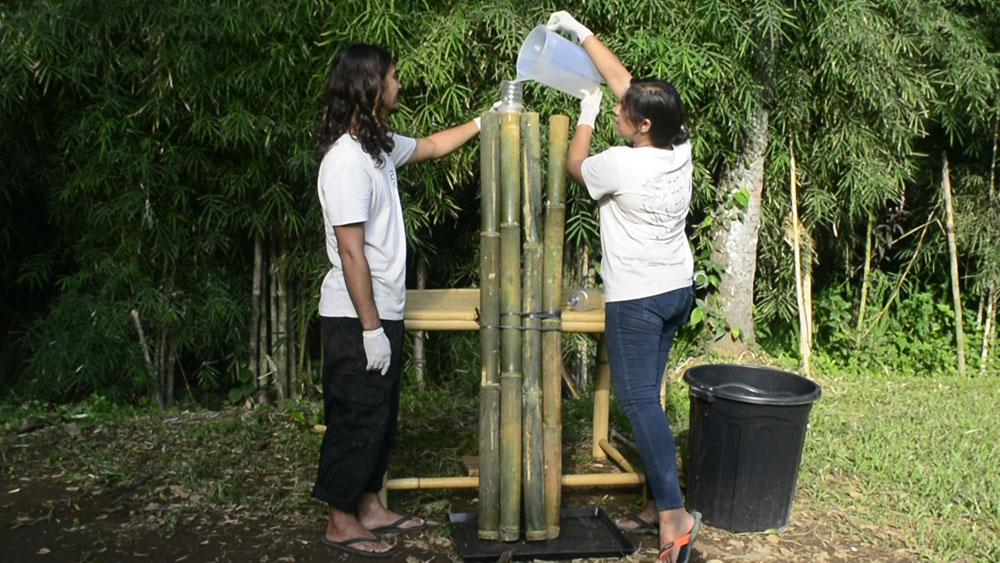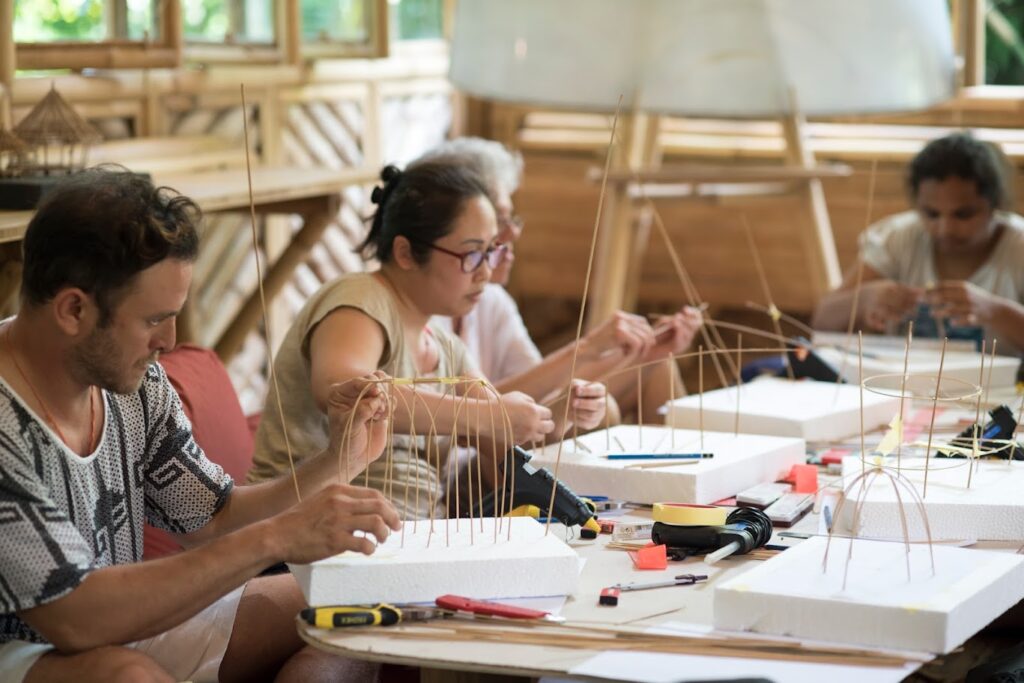The 3 Best Natural Building Materials for Bamboo Construction
By Sai Goutham | June 9, 2022 | Construction -

In this article we share the top alternative natural building materials that can be used with bamboo buildings.
Integrating different building materials with bamboo helps to improve the building’s efficiency as well as its visual appearance in relation to its context, space, and design aesthetic.
Many different materials can be used along with bamboo, but if you’re wanting to use eco-friendly materials here are the top 3 alternative natural materials we enjoy using with bamboo:
- Mud and Lime
- Stones
- Terracotta
1. Mud and Lime
Mud and lime are natural materials that are regenerative and can be used for different applications within bamboo structures, including walls, inbuilt furniture, and floors.
There are different techniques for using mud for wall construction, these include cob, adobe, rammed earth, and wattle & daub. Each technique has its appropriate context and resulting design aesthetic.

Lime can be used as mortar or as a plaster for masonry walls, as a finish, for flooring, and for the lath & plastering technique of building walls.
Using mud and lime creates different textures and natural color contrasts and therefore works in harmony with the bamboo structure. These materials help to improve indoor air quality and regulate temperature in buildings.



2. Stones
There are many stones available in the market and it is crucial to choose the right kind of stone that adds value to your bamboo building design.
The main stone types we use in Bali that are locally available are river stones, volcanic stone bricks- locally known as paras, and slate stone locally known as jember. We use river stones as moisture barriers between the foundations and bamboo structural columns. River stones are also used as seating elements and natural terraces inside a space.
Paras is a stone-cut piece that is used to create natural walls, borders, stairs, and pavements that fit nicely within Bali’s natural landscape. Jember slate is a natural stone with unique textures and shapes, one of the best outdoor paving and flooring materials in terms of maintenance.



3. Terracotta
Terracotta is a baked earth product widely used in buildings as tiles for flooring and roofing in many parts of the world. The colour contrast of terracotta blends well with bamboo and creates beautiful aesthetics. Flooring tiles are available in different sizes and shapes. Roofing tiles are available in rectangular and fish scale sizes. But tile roofs for bamboo buildings need to be designed properly and they only work for linear buildings with pretty minimal maintenance.



Natural and locally sourced materials will make a building more sustainable, but it is always very crucial to use properly processed high-quality materials, well-designed, and skilled construction expertise to make the buildings durable.

Sai was the Research & Development Manager at Bamboo U until 2023. He is also a natural builder and an architect from India. He has managed many mud and bamboo projects over the years.
OCTOBER 10-21, 2025
The 11 Day Bamboo Build & Design Course in Bali
In 11 days, we'll show you how to build bamboo structures we’ll share all that it takes to build with nature.
Start Anytime
The Bamboo Harvesting Course
The Bamboo Harvesting Course is an online step-by-step training to harvest and care for your bamboo clumps to ensure their longevity and productivity. This maximizes the potential of this beautiful grass as a rapidly renewable resource.Whether you are an architect, builder, or sustainability enthusiast, this mini course will enable you to utilize this rapidly regenerative resource as a durable construction material.It will help remove any fear or doubt about the durability of bamboo and help you build reputable bamboo structures that stand the test of time!
















